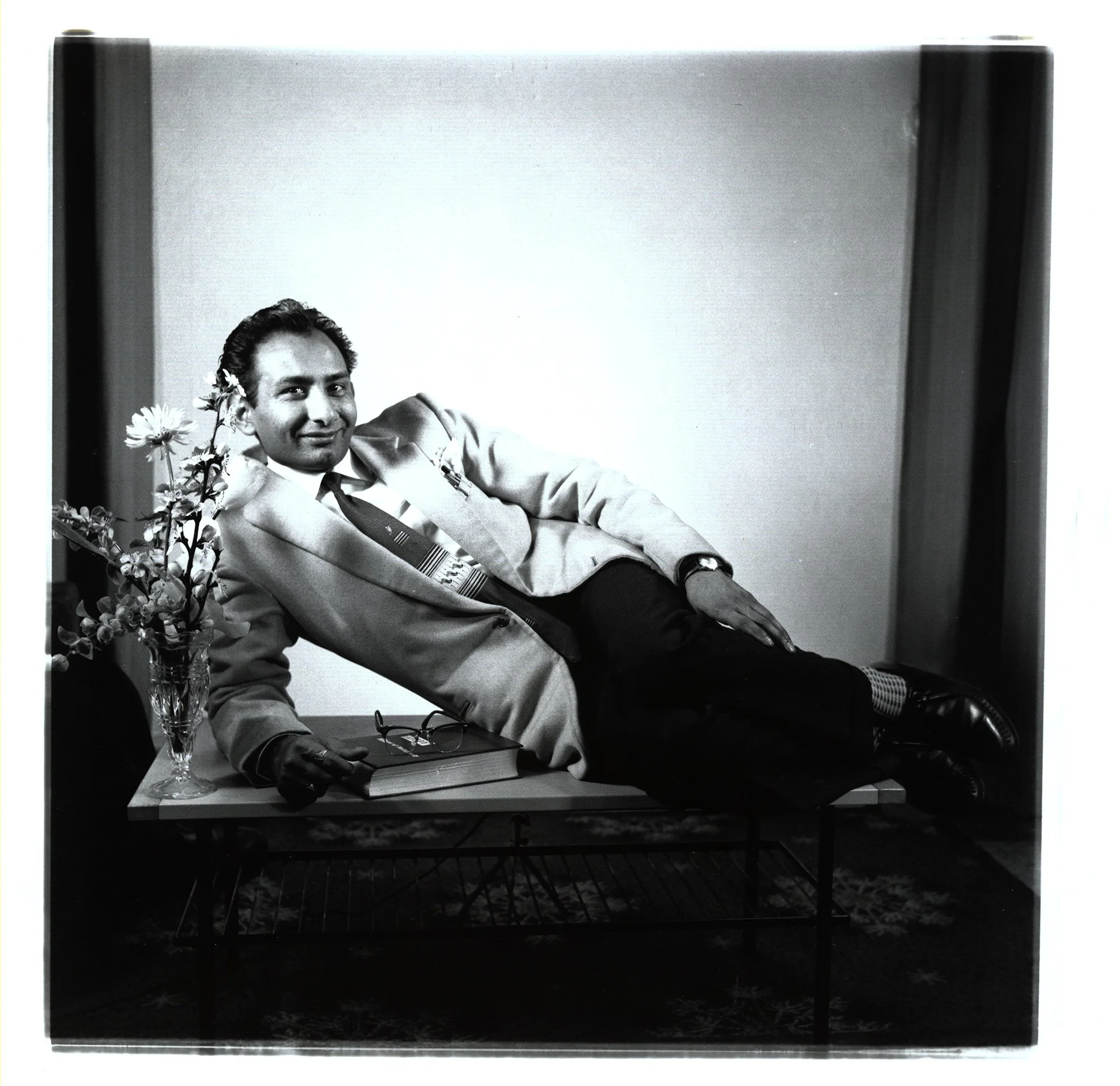Masterji, the Coventry photographer whose evocative portraits recorded immigrant life in the West Midlands
In Compton Verney’s comprehensive survey of Masterji’s career, visitors will be able to see and enjoy photographs and portraits taken between the 1950s and the 2000s, charting the South Asian community in Coventry and the West Midlands – including many which have not been publicly displayed before. The images also provide an important socio-historic record of people from India, Pakistan and Bangladesh settling in to a new country and establishing themselves over successive generations.
Although it took until the 2016 exhibition in his adopted home city for him to receive critical acclaim, Masterji was already a well-known figure in Coventry, not least as its first Indian photographer.
His route into photography began in 1951, when he took a job at Coventry’s General Electric factory and joined the firm’s photographic society. He saved up to buy a Kodak Box Brownie camera and, as word of his obvious skills behind the lens spread, he soon found himself in demand for weddings and other social events. In 2017 Masterji launched his first book and received an Honorary Doctor of Arts (DArts) from Coventry University, in recognition for his outstanding contribution to photography and the heritage of the city. Masterji’s story is as relevant in the present moment as ever, as questions of identity and migration continue to dominate discourses nationally and internationally.
In 1969 he opened the appropriately named Master’s Art Studio, with his portrait photographs continuing to create brilliantly evocative records of people moving to the West Midlands from South Asia and making it their home.
Early works – predominantly black and white portraits of young men – document the pioneers who came to post-war Coventry to find work and helped to rebuild the city, while the later photographs document a community becoming less transitory and more established in the city, with increasing numbers of family portraits commissioned to mark significant occasions such as weddings. The works also capture changes in fashion across the decades, at the same time illustrating the development of photography as a medium from the heyday of film to the dawn of digital.
Master’s wife, Ramaben Patel
The studio’s success was also thanks to the work of Masterji’s wife Ramaben Patel, who was instrumental in developing many of the photographs and interacting with customers. A photographer herself, Ramaben took many intimate family photographs and also taught her children to take photos. Ramaben’s important contribution to both Masterji and the studio’s success will be highlighted in the exhibition, at the same time shedding light on the experiences of other migrant women. The exhibition will include a space which evokes the atmosphere of Masterji’s studio, complete with the hand-painted backdrops which appear in many of his photographs, some of the camera equipment used and other props.
Another aspect of his work was to take portraits that would be sent back home. In some cases, there is a sense of artistry or future ambition, as Masterji and his subjects collaborated to create their own images of success. In the case of Kelly, a bus conductor, we see a suave figure in a pinstripe suit and highly-polished shoes. He would go on to buy an off-licence and move to London. While Gordonbhai Bhakta cuts a playful dash, as he reclines on a small table, smiling and with an air of a movie star larking about during a studio shoot.
Gordanbhai Bhakta
Masterji enjoyed a uniquely close relationship with his sitters – his experiences mirrored theirs and there was no sense of formality in his studio. As a photographer he was known for his charm and his ability to put his sitters at ease. The bond he shared with his sitters, combined with his sensitivity, resulted in portraits which are characterful and revealing.
Compton Verney’s exhibition will be accompanied by oral history interviews with members of the pioneering generation of South Asian migrants in Coventry, exploring the wider context of migration to the city and highlighting the challenges faced by many migrants coming to the UK. These interviews will also shed light on the challenges that many people faced, including economic hardship and racism. The recordings will be played within the exhibition and in Compton Verney’s grounds.
The exhibition is curated in consultation with Coventry-based artist Tarla Patel, Masterji’s daughter, and the custodian of the Masterji archive. Tarla highlights the importance of the personal stories which are shared through the exhibition: “Through the Lens of Masterji is a wonderful collection of photographs that show an intimacy of lives lived, through different eras of political, cultural and technological change. This exhibition offers an insight into the public and private world of Masterji, his family, and the people he met.”
Oli McCall, Curator at Compton Verney, believes Masterji deserves wider recognition as an artist in his own right: “He often touched up the negatives, to manipulate the colours, so there’s a painterly aspect to his work. Like many great portrait artists, he too kept a store of props and objects in the studio to add certain details into his photos, from pens and books to flowers and toys. It’s a tradition that dates back to the Renaissance and by using common-or-garden objects, Masterji brought it up to date but in his own, inimitable style.”
Julie Finch, Director CEO of Compton Verney says: “At Compton Verney, we truly believe in great art for everyone, this show comes at an important time, when Coventry UK city of Culture comes to a close, we will have displayed the works of Masterji, shared his legacy and reached out to new audiences, some of whom have never visited Compton Verney before, linking Coventry visibly to the rest of the world.”




